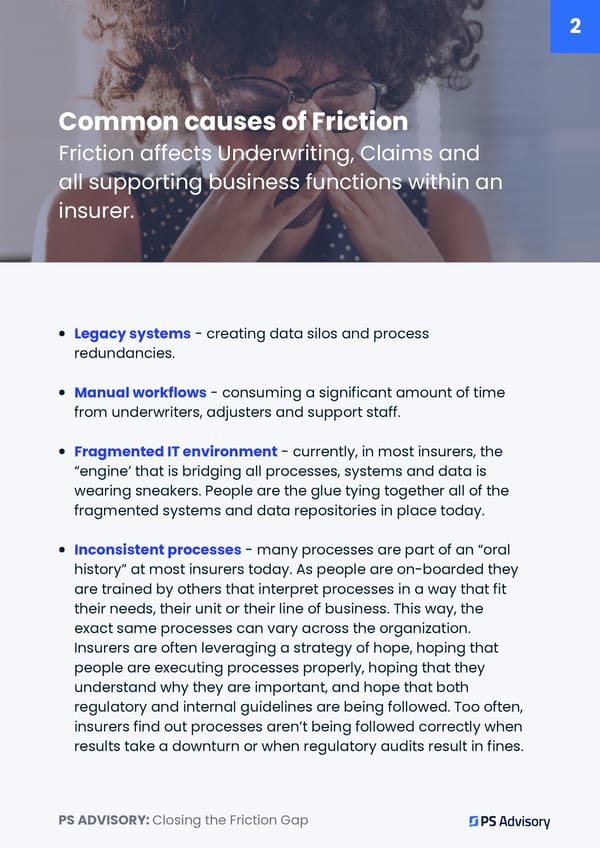Legacy systems - creating data silos and process redundancies. Manual workflows - consuming a significant amount of time from underwriters, adjusters and support staff. Fragmented IT environment - currently, in most insurers, the “engine’ that is bridging all processes, systems and data is wearing sneakers. People are the glue tying together all of the fragmented systems and data repositories in place today. Inconsistent processes - many processes are part of an “oral history” at most insurers today. As people are on-boarded they are trained by others that interpret processes in a way that fit their needs, their unit or their line of business. This way, the exact same processes can vary across the organization. Insurers are often leveraging a strategy of hope, hoping that people are executing processes properly, hoping that they understand why they are important, and hope that both regulatory and internal guidelines are being followed. Too often, insurers find out processes aren’t being followed correctly when results take a downturn or when regulatory audits result in fines. Common causes of Friction Friction affects Underwriting, Claims and all supporting business functions within an insurer. PS ADVISORY: Closing the Friction Gap 2
 Closing the Friction Gap: A Continuous Improvement Roadmap for Insurers Page 3 Page 5
Closing the Friction Gap: A Continuous Improvement Roadmap for Insurers Page 3 Page 5